
Gilman, VT
The history of a quiet mill town on the banks of the Connecticut river in the scenic "Northeast Kingdom" of Vermont.
Specialty Paper Products
The decade of the 1970's saw a rapid growth and many changes toward the development of the Whitefield Plant as a leader in the field of such specialty products as check paper base stock and diazo (blueprint) base stock. In addition, footholds were established in other specialty areas that were rapidly expanding, such as the pressure sensitive label stock field. The No. 2 paper machine became computer controlled from on-line moisture and basis weight sensors and operated with greater efficiency and dependability than ever before. In 1975, the sheeting department closed down and the opaque offset printing paper stocking program was eliminated. The future of the mill was marked out as a streamlined efficient producer of high quality specialized technical paper grades.
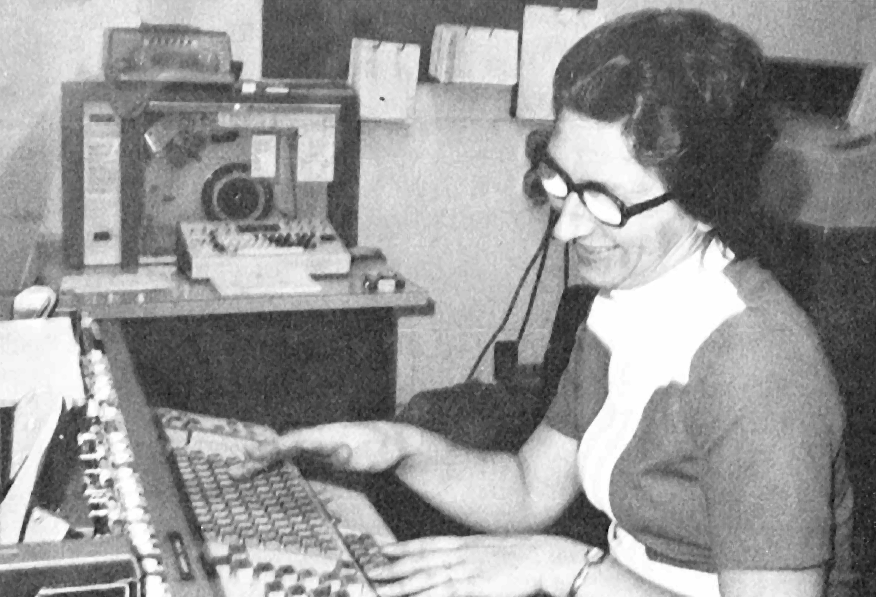
The Gilman mill was upgraded with computer control in 1972.
Major Upgrades
On July 31, 1975, Vermont Governor Thomas Salman dedicated a new $1,000,000 effluent treatment facility. This was a big step forward in demonstrating the mill's commitment to our nation's environment.
In 1976, Georgia-Pacific installed new stock centri-cleaners, a headbox inlet and cleaner pumps to make it easier to control the quality of the paper. With this equipment, up to 275 tons of stock per day could be cleaned and furnished to the paper machine.
In February 1977 the announcement was made to construct a new wood burning boiler. The cost of crude oil had risen from $20 per barrel to $60 per barrel and the Gilman mill burned 2.2% high sulfer crude oil in the 1920 5 drum sterling boiler. Steam used to dry the paper and heat the mill and electricity to run the mill was becoming a major cost concern for future projects. The new chip boiler and a 5meg steam turbine generator were big steps to try to cut power and fuel costs. The 100,000 pound per hour boiler supplies steam to the paper mill and was fired entirely with wood bark and other wood waste.

In 1977, Greg Cloutier joined GP as a project engineer for the new boiler. In 2008, Greg was instrumental in purchasing the mill and restarting its hydroelectric generators.
Dam Upgrades
The Connecticut River, with its changing levels and occasional surprises, continued to be a constant challenge. Low cost electric generation from the four 1920's hydro turbines made it important to control the river flows. The challenge was to see if the existing water could be controlled and used to produce more energy without, in any way, interfering with its natural quality or changing its course. To this end, new flash boards were installed in 1974 and a hydraulically operated gate twenty-five feet wide and nineteen feet high was built in 1979.
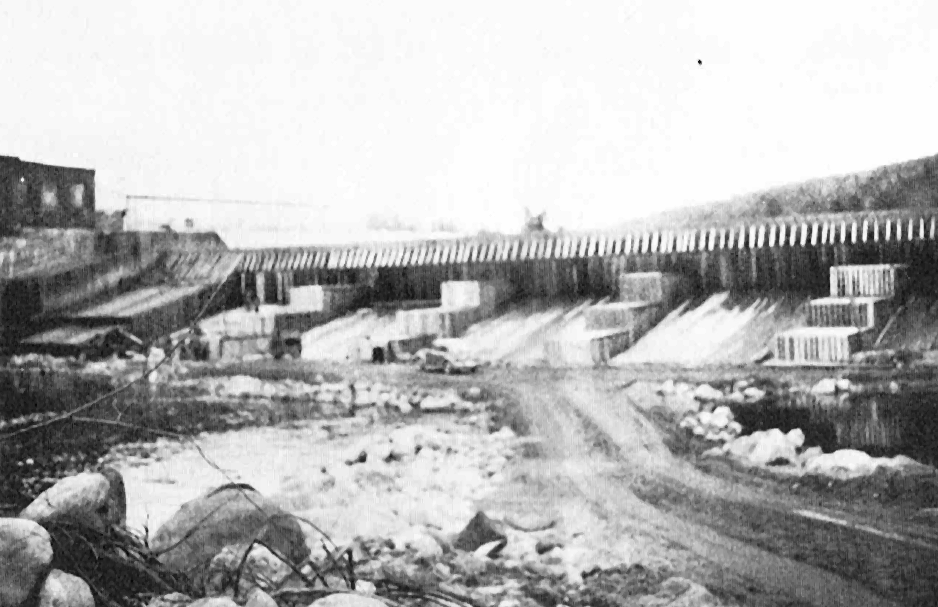
The new flash boards being installed on the dam in 1974.
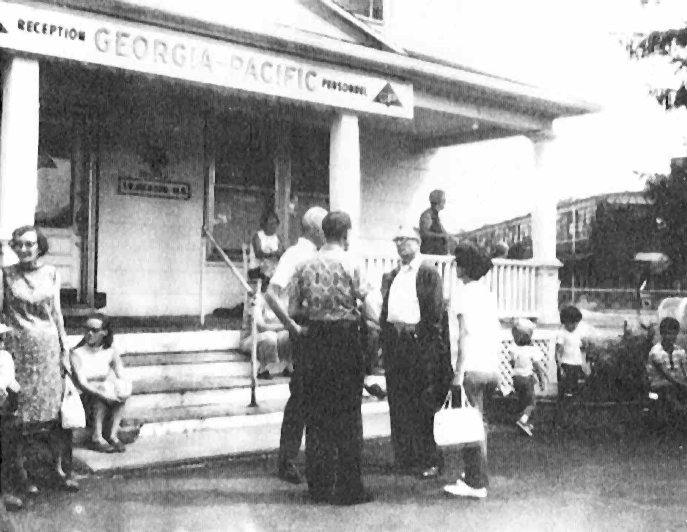
The 1974 family day at the Gilman Georgia-Pacific mill.
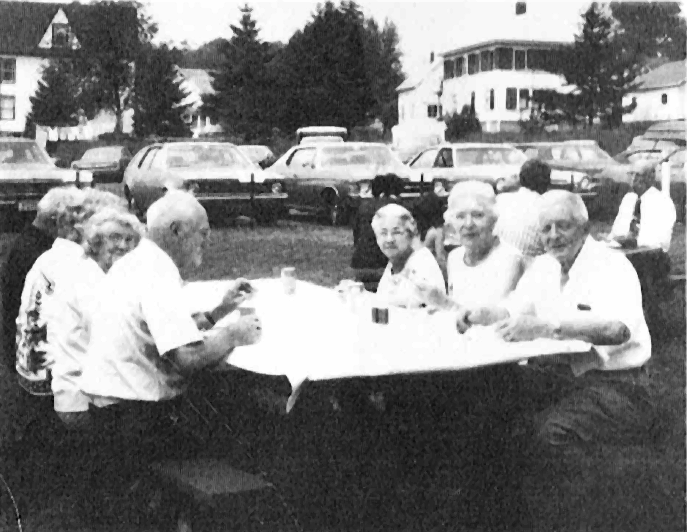
Everyone came out for fun, games and food!
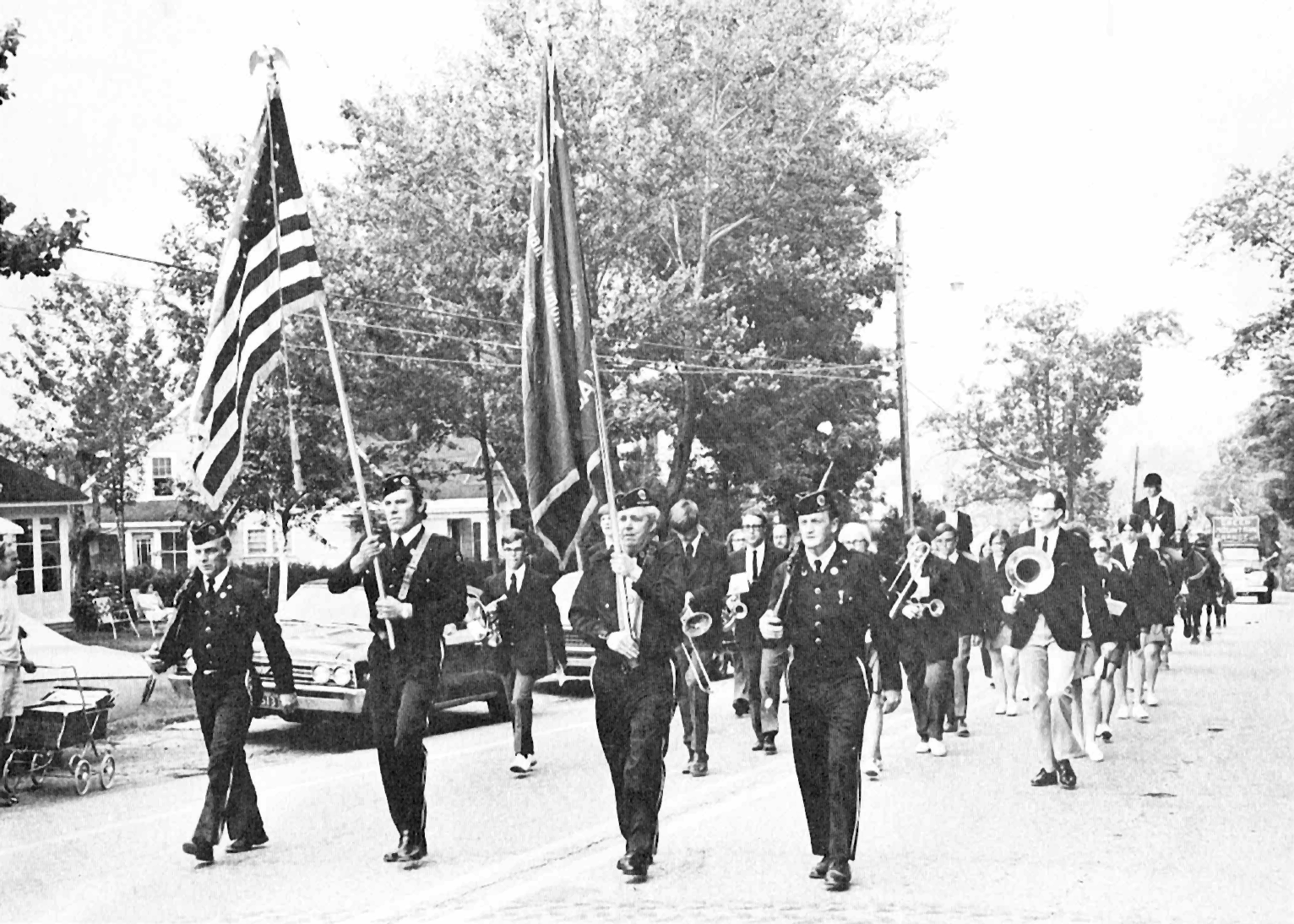
The 1973 Gilman American Leagion Color Guard: Clarence Smith, Robert Gunnip, Lorenzo Barrett and Charles Aremburg.

Skating on the Gilman rink in 1975.
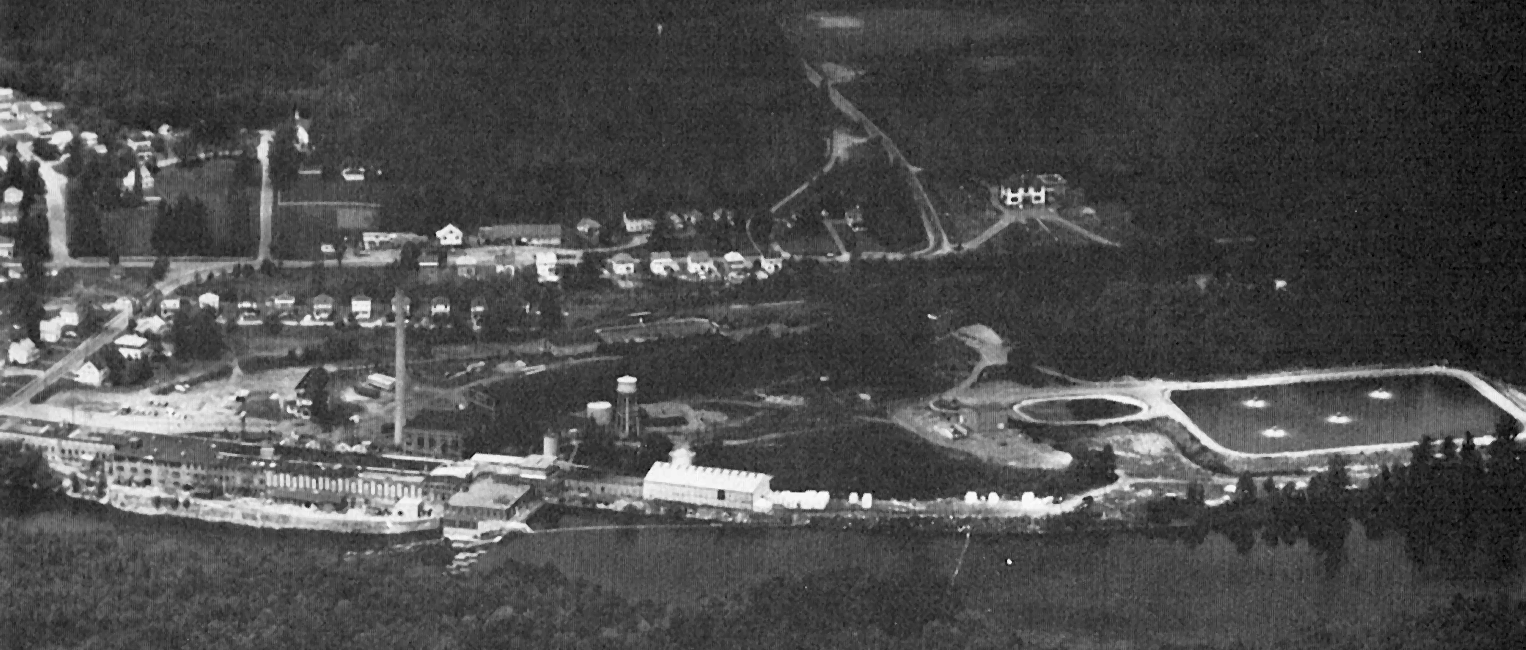
An aerial view of the village of Gilman in 1978.
Extensive Rebuild
The decade of the 1980's started with a major rebuild of the paper machine that shut the machine down for 21 days in October of 1980. Thirty dryers and all their related equipment were completely removed. The building walls were opened up in order to remove the old dryers. In February 1982 a new steam turbine generator was started up in the steam plant to provide additional low cost electricity by reducing high pressure steam from the boiler to lower pressure steam for use in the paper mill.
A new pulp storage warehouse was also built from a disassembled new building relocated from the Thompson, NY Plant.

Workers prepare the paper machine to recieve new driers in 1980.
Additional Upgrades
In the mid 1980's additional upgrades were made to the mill. In 1983, the paper machine line shaft drive was changed from steam to electrical power, a new winder was installed and, to make the press section more efficient, a centrifugal exhauster was put in to remove water from wet press felts. Leaks in the dam were also fixed during 1983.

A coffer dam was installed to dry out sections of the dam enough to fix the leaks in the timber crib wood dam by replanking the damaged areas in 1983.
Third Section Rebuild
In 1984, the third section rebiuld on #2 paper machine was completed. Included in the scope of the project was a new size press of different design, a new dryer section, a centralized drying control system and a new insulated hood to increase drying efficiency. During September, the machine was down for 13 days. The work was begun from the foundation for the dryer framing. The sole plates were leveled and aligned within several one-thousandths of an inch.
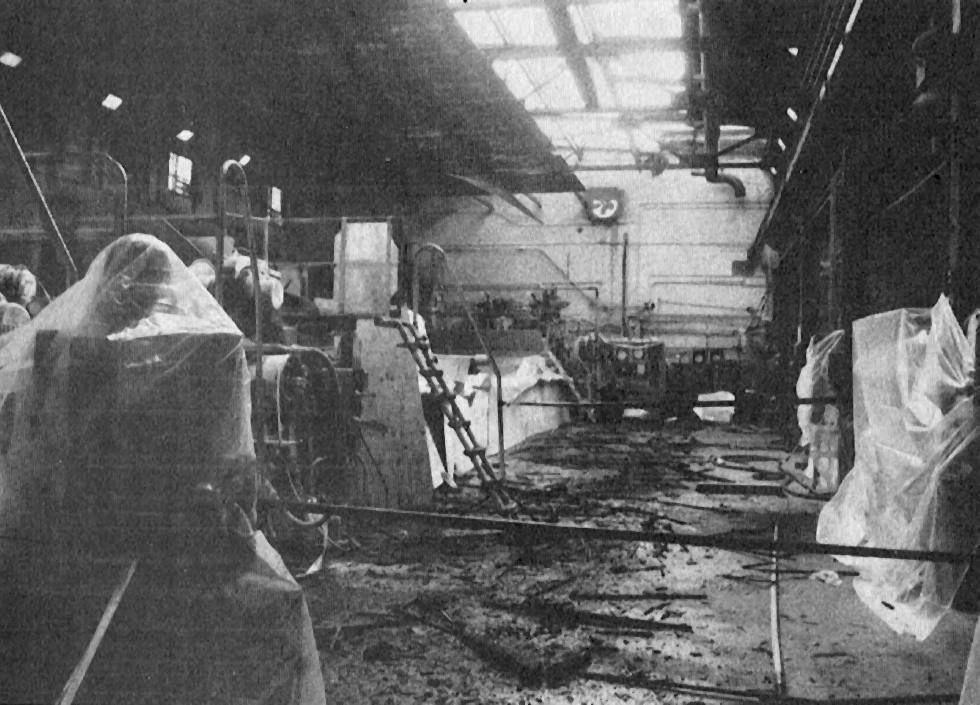
The paper machine is covered in plastic to protect it as the roof is repaired in 1984.
No. 1 Water Wheel
In 1986, a state-of-the-art Water Wheel, costing in excess of $2.5 million was dedicated by Vermont Lieutenant Governor Peter Smith. After seven months of intensive construction and over six years of planning and design, the new No. 1 water wheel generated its first kilowatt of power on March 17, 1986. This enormous undertaking was done with the expectation of generating an estimated 1,750 kWh at peak water and providing the mill with a energy independence by eliminating the need to purchase power from the grid. The Allis-Chalmers gated tube turbine had some growing pains in its first year of operation, but by 1987, the unit was performing as expected.
30 years later, the No. 1 turbine at the Gilman mill now has a peak power of 2,200 kWh and produces clean, renewable energy to Northern Vermont.
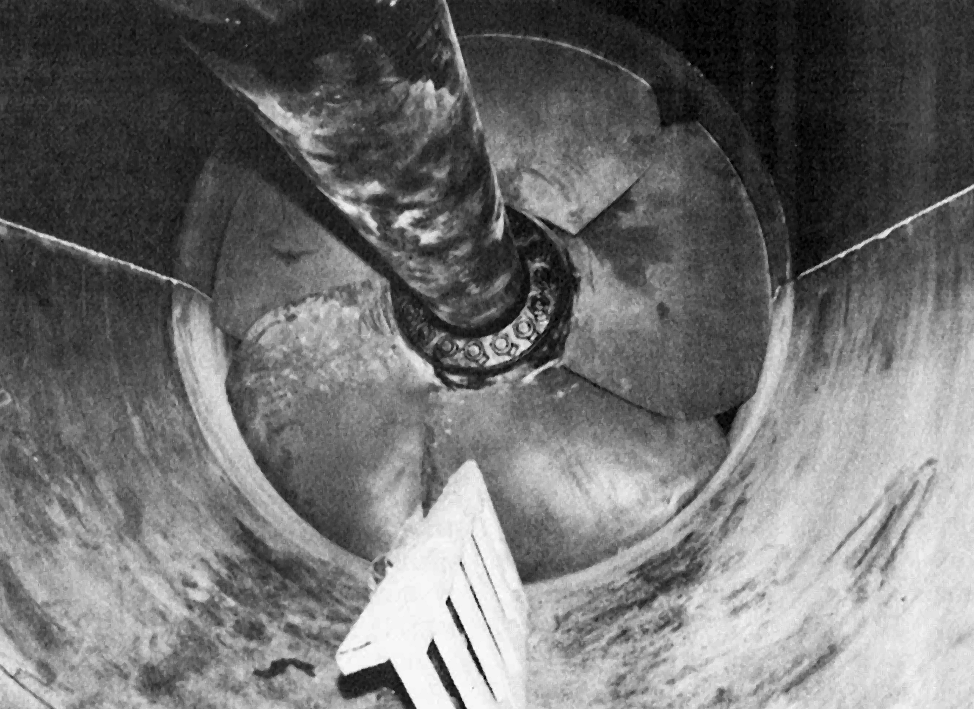
The runner (turbine blades) on the No. 1 unit are over 10ft in diameter.
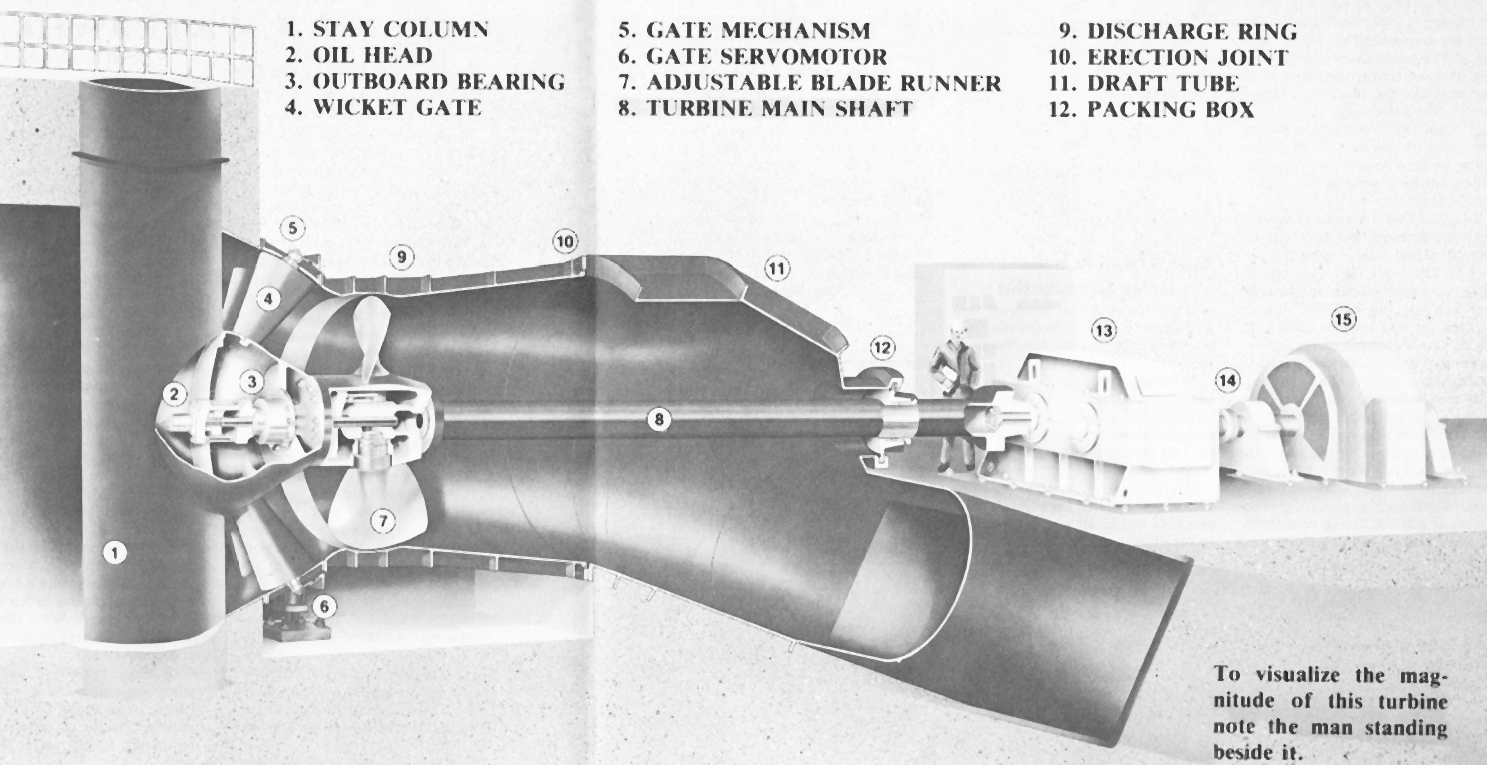
Full Computerized Control
A major improvement occured in 1989 with the installation of a computerized distributed control system for continuous stock blending that automated the stock preparation process all the way from the HiLo pulper discharge to the wet end of the paper machine. The paper machine tender now had a complete view and control over most of the key elements of the paper making process which improved the uniformity fo the production quality.

A nice look at the wooden dam and its flash boards in 1989.
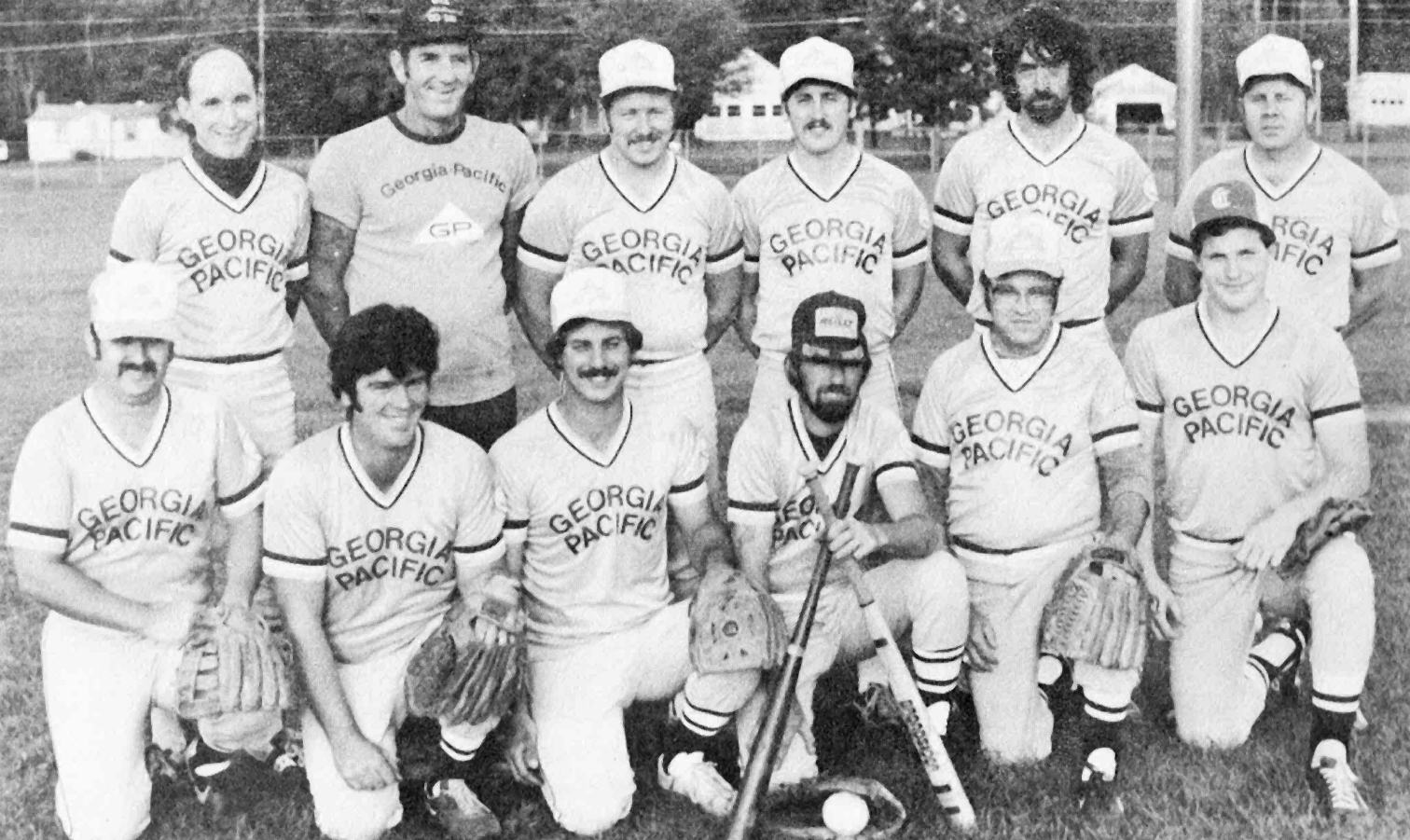
The Georgia-Pacific 1985 Division B Softball Champions.
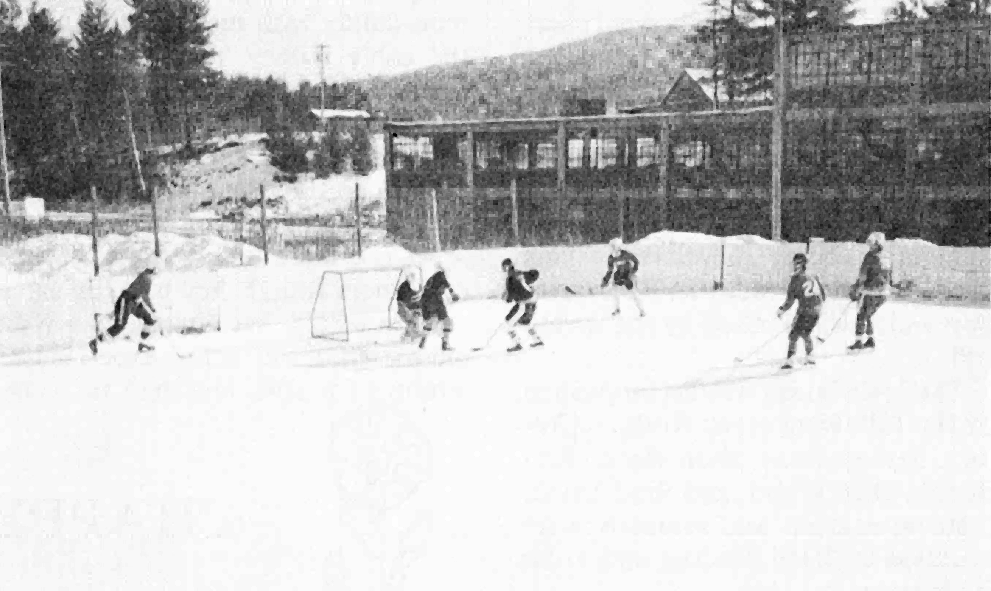
The Gilman hockey team practices outside the mill in 1989.
